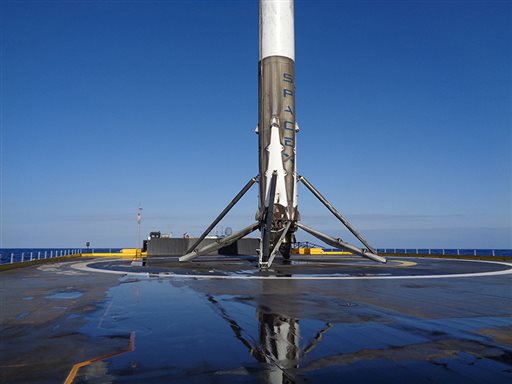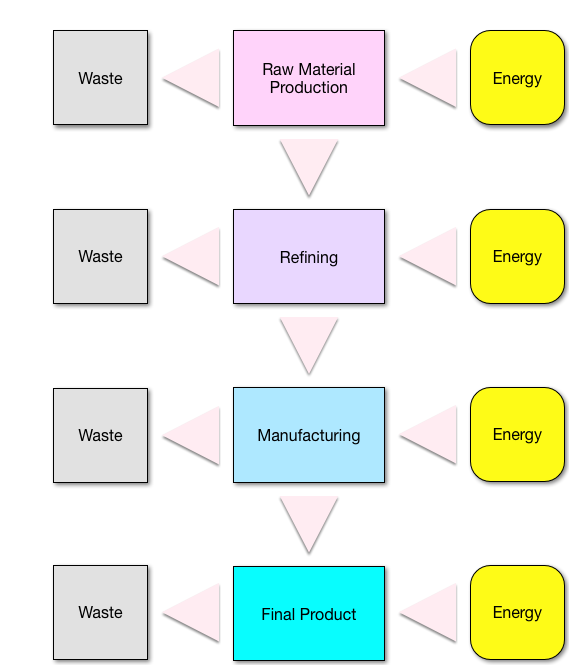
While I was sleeping early this morning, SpaceX launched JCSAT-14 on its way to a geosynchronous orbit. And then, after first and second stage separation, SpaceX landed the “hot” first stage on its drone ship in the Atlantic.
What makes this landing special is two-fold. First, it’s the second consecutive first stage landing and intact recovery. Second, this was a hot and high launch of a large satellite into geosynchronous orbit. That meant that a lot less fuel was left for a first stage landing, and the first stage was traveling a lot faster before it turned around and came home. In spite of this it did and it came back successfully, as can be seen above.
This is the point where the management of United Launch Alliance (ULA) and Arianespace should be seriously concerned about their organization’s future. Both have dismissed SpaceX’s attempts to create truly reusable rockets, downplaying every successful step (moving the goalposts back). The next step in SpaceX’s march to stage reuse is to actually reuse one to send another payload into orbit. Ideally these stages would be used multiple times.
The best that the old-school launch providers have provided as a competitive alternative to SpaceX’s reusable stages is Arianespace’s Adeline, a proposed reusable system that only return’s the first stage main engines, throwing away everything else. According to Airbus Defense and Space, Adeline’s return of the first stage and avionic’s package will allow “80%” of the first stage’s “economic value.” First made public in June 2015, nothing has yet to be built, let alone tested. It remains just a paper proposal.
There is only one other company that has come anywhere close, Blue Origin with its New Sheppard launch vehicle. New Sheppard comes closest to the idea of Single Stage to Orbit (SSTO), a design and philosophy that were last used with the McDonnell Douglas DC-X test vehicle from the 1990s. It was never meant to go to orbit, but was a first step in testing vertical takeoff and landing (much like New Sheppard) and the necessary technologies for rapid turnaround, and thus, extremely cheap space flight. MD provided some remarkable testing until funding dried up around 1995, when NASA took over. It was under NASA’s control that the DC-X finally met its doom, due in no small part to the demoralization of the engineering personnel picked up along with flight hardware, by NASA’s burdensome bureaucratic processes.
Jeff Bezos, who owns Blue Origin, has kept NASA at arms length, and has allowed his engineers the freedom necessary to produce a truly impressive reusable rocket that has flown three times, the last two up to the edge of space and back. The fundamental difference between Blue Origin and SpaceX is that SpaceX has placed payloads into orbit, while Blue Origin has not. That lack of orbital reach by Blue Origin should not diminish what New Sheppard has accomplished. Both Blue Origin and SpaceX represent two important lines of research, lines that will merge into a single fully reusable space transportation system for both human and cargo transport into space and back. We have to have a fully reusable STS that will provide the same low-cost access to space the way our current fleet of airliners allow for low-cost access to just about any point on our planet. We will get there, but only with companies like SpaceX and Blue Origin. Today’s SpaceX landing at sea, its second successive landing, is a vital step to that point in time.


You must be logged in to post a comment.